8 Things You Didn’t Know About Cannabis Growing and Use in Different Countries
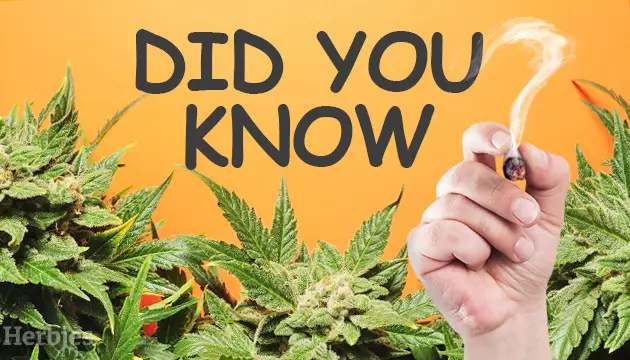
Cannabis has accompanied mankind for a significant portion of its history. Scientists suggest that humans began growing cannabis in China about 12,000 years ago; since then, it has spread throughout most parts of the world and left a profound impact on our culture due to a rich history of medical, recreational, and spiritual usage.
Although globalization has left its mark on the cannabis-growing industry, fascinating differences in the use and cultivation of this plant exist to date in various regions and countries. Let’s see how people across the world grow pot today and what makes it so special with these 8 facts about weed growing and use!
Moroccans Make Strides in Cannabis Growing
Despite government crackdowns, Morocco is ranked as the world's largest producer of cannabis resin. Cannabis cultivation in the mountainous Rif region in the country’s north, where Moroccans mainly grow the plant, has seen several transformations in the last decades – first with the introduction of feminized seeds in the late 1990s, then with the development of cultivation methods and production of high-potency modern extracts in the 2010s.
In Morocco, traditional production of sieved hashish is being increasingly replaced by modern methods, such as high-yielding varieties introduced by European producers and buyers, seedlings raised in nursery beds, specific land preparation, row planting, drip irrigation, mulching, and improved harvesting techniques.
Morocco’s traditional Kif landrace has apparently all but disappeared after being replaced by low-water-use varieties from the Near East, which are still called Kif even though they’re grown almost exclusively to produce hashish. According to some Moroccan cannabis farmers, the new hybrids yield 3 to 5 times more hashish than the original Kif (curiously, yields soared amid a two-third decline in cannabis cultivation at the same time).
Afghans Don't Like to Smoke Cannabis Heads
Afghanistan is one of the cradles of cannabis; it represents one of the oldest continuous cannabis cultures in the world. Although it’s currently illegal to use, sell or buy marijuana in Afghanistan, the plant is still grown widely there. However, most Afghans prefer not to consume the dried buds, instead smoking the local form of hashish, locally known as “charas”.
It’s made by first drying the female plants and threshing the seeded flowers, then sifting the material through sieves to produce a powdery substance called “garda”. Repeated sieving results in different quality of garda (first, second, …) – the higher the grade, the higher the proportion of resin and, hence, quality and price. Then farmers process it into charas, which is most often smoked in a straight conical clay pipe called a chillum.
Southeast Asians Make Hand-Rubbed Hashish
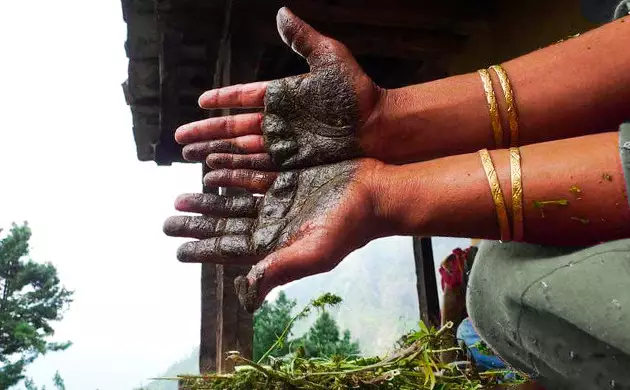
The other technique used en masse only in some parts of Asia such as India, Nepal, and Kashmir is the hand-rubbing one. Until the 1970s, this method was almost unique in the world – perhaps because it’s much more wasteful and time-consuming than making sieved hash. It consists of rubbing parts of the still-living cannabis plants back and forth between the palms; the resin that builds up on the skin is then collected in a ball.
It is crucial that the person rubbing doesn’t have any sweat or water on their hands, because when charas gets wet, the most important thing you want to avoid is mold, which has an unpleasant taste and can cause respiratory problems when smoked. A farmer can make around 10 g of high-quality charas in a day, but the technique is rather ineffective – it takes some 50 buds of ganja to produce this amount of resin.
Weed Milkshake Is a Thing in India
India is also home to one of the most unusual cannabis edibles – a refreshing drink called “bhang lassi” that’s essentially milk or yogurt infused with a paste made from finely ground pot leaves and stems (not buds). It takes about 1-2 hours for this drink to take effect, which can be a bit psychedelic compared to smoking marijuana and is known to cause feelings of euphoria and relaxation that can last up to 12 hours.
Bhang lassi is traditionally used in foods and drinks, especially during some Hindu and Sikh religious occasions such as Holi or Mahashivratri. Outside of these festive periods, it’s illegal in most places in India, although there are government-approved shops selling this psychoactive beverage in the holy city of Varanasi.
Thai Sticks Were the OG Cannabis Cigars
Sinsemilla, or cannabis grown without seeds, came into the spotlight in Mexico (hence the name) in the 1970s when local production of marijuana started in the U.S. However, one of the interesting facts about weed that many don’t know is that seedless cannabis had already been produced in other parts of the world for a long time.
One of those places is Isan, the northeast region of Thailand, whose “Thai sticks” were brought to the U.S. in the 1960s. Thai sticks were basically the buds of the marijuana plant skewered onto a stem and wrapped in marijuana leaves to keep it all together. Later, they were made using bamboo instead of stems and hemp string instead of plant fibers.
With their spicy, pungent aroma, Thai sticks became famous among the GIs stationed in Thailand during the Vietnam War. The High Times magazine wrote: “Years before sophisticated sinsemilla techniques were incorporated into the crop management of U.S. growers, the Thais were, without effort, turning out a superior product.” Who knows – with Thailand making it legal to cultivate and possess marijuana this summer, maybe the auld lang Thai sticks will come to replace the joint and the bong one day?
Germans Learned to Create Living Soil
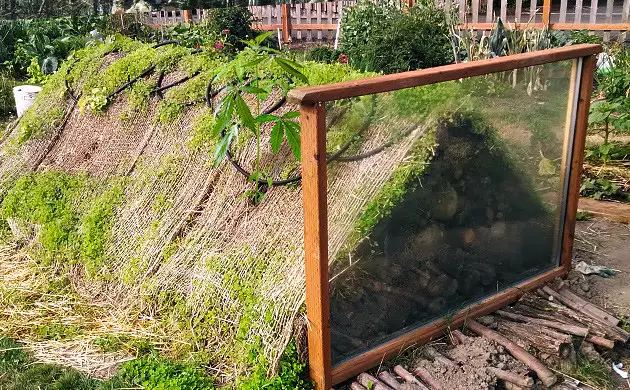
Germany might not be the first country that comes to mind when it comes to pot, but this nation gave the world a gardening technique that has been gaining traction in the cannabis-growing industry. Practiced by natural farmers and gardeners for centuries, it’s called Hugelkultur (“mound culture” in German) and consists of a raised plant bed built up over decaying wood debris and other plant materials. This mound acts like a sponge, retaining water and nutrients that are then used by the plants grown on it, making it ideal to offset periods of drought.
This budget-friendly technique has spread beyond Germany, including in the U.S., and is used in outdoor cannabis farms wherever there is substandard soil or inclines where water would normally run off. Aside from conserving water, it enhances biodiversity in the soil, creating and releasing nutrients that feed plants. The bed improves with time, with effective nutrient release occurring for up to 20 years depending on the density and type of materials used.
Moreover, the hugelkultur-improved soil generates some heat, which means the soil in the bed may allow for earlier planting in spring since it warms up more quickly. It may be hard work, but the benefits are huge: your soil will become rich in carbon and supercharge your cannabis growth for years!
Fish Poop Makes a Closed Loop
Probably every cannabis aficionado has heard of the hydroponics growing method, but there’s another agricultural technique that may not sound as familiar despite its almost identical name. It’s called aquaponics, and it’s a sustainable method of raising freshwater fish and plants in a closed water system that has proven to be one of the most advanced cannabis growing techniques.
In recent years, a number of businesses in Canada and then in the U.S. have adopted this method, which involves a hydroponic setup for growing pot plants with the addition of fish in the water tank or reservoir. Fish produce ammonia in their waste, which is distributed through the growing system. The naturally occurring bacteria in the water convert ammonia into nitrites and then nitrates that act as food for marijuana.
The plants absorb the nitrates and then oxygenate and purify the water for the fish to live in – that’s a win-win in our books! This kind of symbiotic relationship is also quite cost-effective, as fish food is the sole input you will need for this setup. Moreover, such an ecosystem enables growers to produce high-quality organic marijuana without the need for harmful chemicals, fertilizers, or pesticides.
Cannabis Has Been to Space

Cannabis is known to be a very forgiving plant, but what if you sent it into space? One of the interesting facts about marijuana is that it actually has been there. In 2020, a Colorado-based agricultural technology company called Front Range Biosciences sent hemp and coffee tissue samples to the International Space Station to see how a zero-gravity environment and space radiation would affect the plants’ genetics.
There, the tissue cultures were housed in a temperature-regulated incubator for a month under the care of U.S. astronauts before being brought back to Earth. The crew harvested and preserved the plants at different points in their grow cycle so that researchers could analyze which metabolic pathways were turned on and turned off. The plants were then regenerated and grown up.
Although there haven’t been any groundbreaking announcements yet, scientists hope that this experiment will help them better understand how to grow these plants in extreme environments, which is crucial to figuring out how to adapt our food supply to climate change.
Herbies Head Shop expressly refuses to support the use, production, or supply of illegal substances. For more details read our Legal Disclaimer.






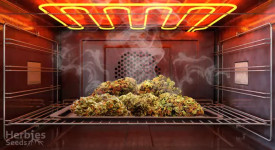




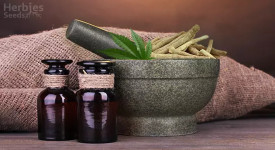


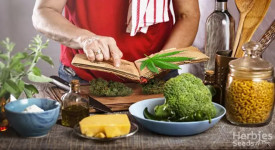
Thank you for leaving a comment for us!
Your feedback will be posted shortly after our moderator checks it.
Please note that we don’t publish reviews that: